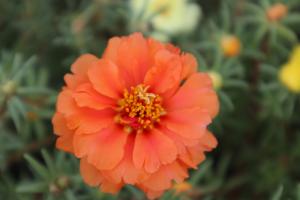How to Plant Seeds in Plant Starter Pots
Plant starter pots are a great way to give your seeds a head start before planting them in your garden or transferring them to larger pots. Here are some simple steps to follow when planting seeds in plant starter pots:
Step 1: Choose the Right Potting Mix
Choosing the right potting mix is crucial when planting seeds in starter pots. Look for a mix that is specifically designed for starting seeds, as it is formulated to be light and airy to allow for seed germination. Seed-starting mixes are also low in nutrients, which reduces the risk of seedlings being burned by too much fertilizer.
Step 2: Fill the Pots with Potting Mix
Fill the plant starter pots with the potting mix, leaving about a half-inch of space at the top. Make sure the soil is moist, but not wet. Wet soil can cause seed rot, so be careful not to overdo it.
Step 3: Plant the Seeds
Plant the seeds according to the instructions on the seed packet. In general, you will want to plant the seeds twice as deep as their diameter. Gently press the soil down around the seeds to ensure good contact between the soil and the seed.
Step 4: Water the Seeds
After planting the seeds, water them gently. A watering can with a fine spray nozzle is ideal, as it will not disturb the seeds or the soil. Keep the soil moist at all times, but be careful not to overwater the seeds. Over-watering can cause the seeds to rot or develop fungal diseases.
Step 5: Cover the Pots
After watering the seeds, cover the plant starter pots with plastic wrap or a clear plastic bag. This will create a greenhouse-like environment that will help to keep the soil moist and warm. Keep the pots in a warm, bright location, avoiding direct sunlight. When the seedlings start to emerge, remove the plastic cover.
Step 6: Transplant the Seedlings
When the seedlings have grown large enough to handle, they can be transplanted into larger pots or into your garden. Be sure to harden them off first by gradually exposing them to outdoor conditions for a few hours each day. This will help them to adjust to the new environment and reduce transplant shock.
Conclusion
Plant starter pots are an excellent way to get a head start on your garden or indoor plants. By following these simple steps, you can ensure that your seeds will germinate and grow into healthy plants. Remember to choose the right potting mix, plant the seeds at the right depth, water them carefully, and cover them with plastic wrap until they emerge. With a little care and attention, your seedlings will be ready to thrive in their new environment.

 how many times do yo...
how many times do yo... how many planted tre...
how many planted tre... how many pine trees ...
how many pine trees ... how many pecan trees...
how many pecan trees... how many plants comp...
how many plants comp... how many plants can ...
how many plants can ... how many plants and ...
how many plants and ... how many pepper plan...
how many pepper plan...






























